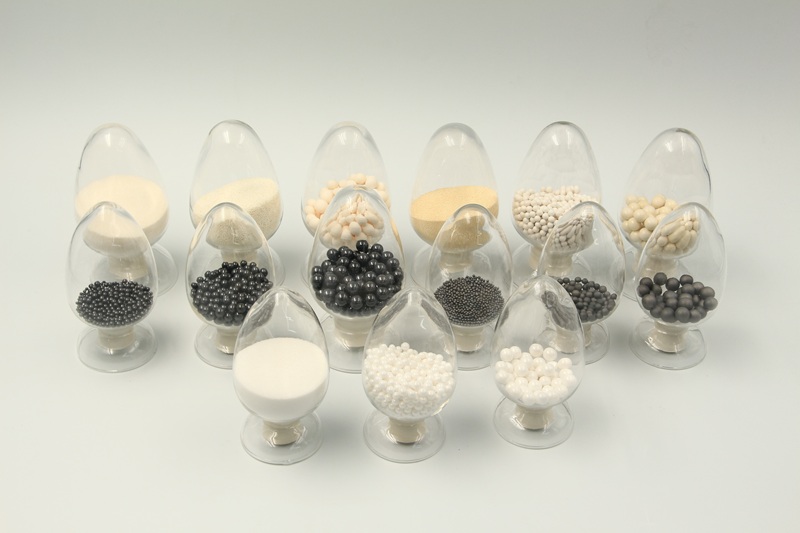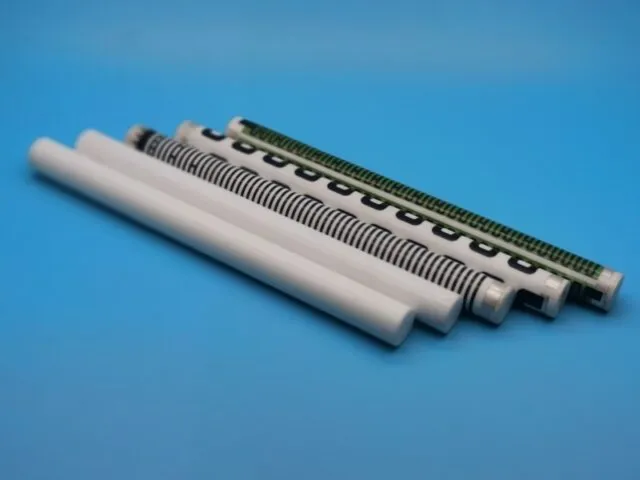Grinding media are essential force-transfer components in milling operations. Their performance directly impacts processing efficiency, precision, and final product quality. Below is a practical analysis covering key media types and critical selection factors.

Ceramic Ball Family Portrait
01 Common Types of Grinding Media
By Material:
- Metal Media: Includes steel, stainless steel, and high-chrome cast iron balls. Known for high density (e.g., ~7.8 g/cm³ for stainless steel), excellent wear resistance, and impact strength. Ideal for coarse grinding and efficient size reduction of hard materials like metal ores and alloys.
- Non-Metal Media: Encompasses zirconia, alumina, glass, and agate beads. Offer high chemical stability and eliminate metal contamination risks. Primarily used for fine grinding applications involving ceramics, glass, kaolin, and similar materials.
- Natural Media: Such as pebbles and quartz sand. A cost-effective option, though less efficient. Typically used for coarse grinding in cement, silicate industries, or specific applications like stone processing.
By Shape:
- Spherical: The most widely used shape. Offers good flow characteristics and numerous contact points. Well-suited for ball mills and attritors.
- Cylindrical (Rods): Employed in rod mills. Helps minimize overgrinding and can enhance fine grinding efficiency.
- Specialty Shapes: Includes short cylinders or irregular particles. Designed for specific performance optimization but less common. Mostly found in specialized polishing tools like vibratory finishers.
02 Key Factors Influencing Grinding Performance
Media Properties:
- Density: Higher density media (e.g., tungsten carbide balls at ~14 g/cm³ vs. zirconia at 6-8 g/cm³) deliver greater kinetic energy, boosting grinding efficiency.
- Size & Distribution: Smaller media promote finer particle sizes and better uniformity, though they carry less kinetic energy per unit. Larger media provide greater impact force but can lead to uneven grinding and overgrinding. An optimized mix of sizes is crucial – larger balls deliver primary impact energy, while smaller balls fill voids, increase grinding contacts, and cushion larger media – significantly improving overall efficiency and particle size distribution.
- Surface Texture: Smoother surfaces minimize wear and product contamination. Rougher surfaces risk scratching workpieces and accelerating wear.
- Hardness & Wear Resistance: Media hardness should substantially exceed the material being ground (typically recommended >1.2x). High wear resistance extends media life, reduces contamination from media wear (critical for high-purity applications), and maintains consistent grinding efficiency and particle size control.
Process Parameters:
- Media Fill Level: Directly affects grinding intensity. Overfilling risks jamming; underfilling reduces efficiency (typical optimal range: 30%-50%).
- Mill Speed & Duration: Higher speeds increase shear forces but risk overheating. Longer grinding times generally yield finer particles and improve surface finish (in polishing), but also increase energy consumption, media wear, and overgrinding potential. Optimize time based on target particle size and efficiency goals.
- Slurry Concentration: Impacts slurry viscosity, media-particle contact efficiency, and energy transfer. Too low, and you get excessive media-media collisions (inefficient grinding); too high, and slurry flow suffers, grinding efficiency drops, and temperatures may rise.
- Grinding Aids: Chemical additives that reduce particle surface energy, minimize agglomeration, improve grinding efficiency, and lower energy consumption.



